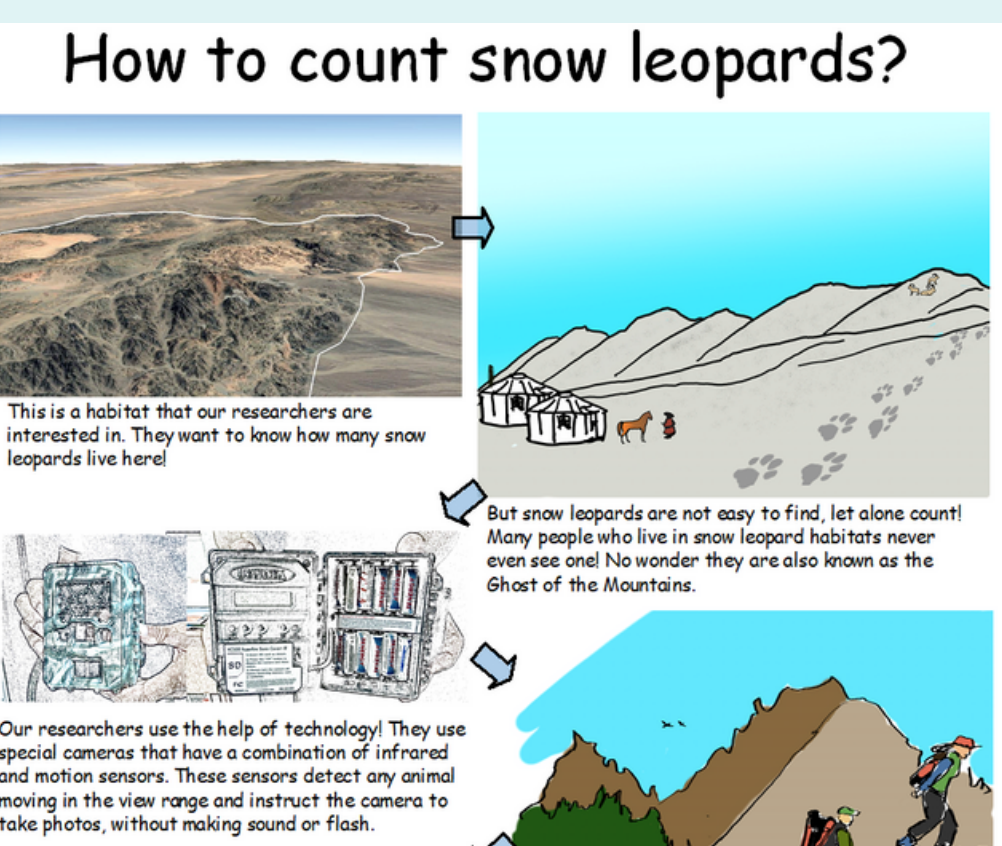Kid Zone- Snow Leopard Conservancy
Management Planning
These GSLEP guidelines were originally designed to provide a handy toolkit to assist in the preparation of scientific, landscape level, climate smart management plans for the GSLEP landscapes in 2014.
Tourism in Snow Leopard Habitats
This GSLEP document aims to provide a practical guide to ecologically and socially conscious tourism practices within snow leopard habitats. It is designed primarily for operators in the tourist industry but also has a potential wider audience of policy makers in conservation and economic development fields.
https://globalsnowleopard.org/wp-content/uploads/2020/08/Eco-Tourism-Principles-web.pdf
Double Observer Survey Method
This manual provides practical, step-by-step guidance on how to plan, implement and analyse double observer surveys to estimate ungulate population abundance in mountainous terrain. Such population estimates are useful for the long-term monitoring of ungulate species.
PAWS: Population Assessment of the Worlds Snow Leopards
PAWS: Population Assessment of the World’s Snow leopards
At the International Snow Leopard and Ecosystem Conservation Forum 2017 in Bishkek, the range country governments formally endorsed a plan to develop a global snow leopard population assessment. The ambitious initiative, called Population Assessment of the World’s Snow Leopards, or, in short, PAWS, aims to produce a robust estimate of the threatened cat’s population status within the next 5 years.
The GSLEP secretariat has been tasked with coordinating this initiative, and has developed an Action Plan which has been approved by the GSLEP Steering Committee.
PAWS aims to bring together the global snow leopard conservation community’s resources, manpower and expertise to jointly arrive at a scientifically robust population estimate.
Find out more on the GSLEP Website.
PAWS TOOLS
The GSLEP Secretariat and various partners have created a number of tools designed to help snow leopard scientists more effectively and efficiently collect and analyze population data, and to ensure that they are consistent with the recommendations of the PAWS Science Advisory Group.
Macro vs micro-level designs: The PAWS approach breaks assessing the abundance of snow leopard populations into two steps. First, we decide which areas to survey (macro level). Then, we decide where to place cameras in each survey area (micro level).
PRISM Evaluation Toolkit
PRISM is an evaluation toolkit that helps practitioners plan and evaluate the conservation program outcomes and impacts.
Valuation of Ecosystem Services
This GSLEP report provide the first assessment of the economic value of provisioning ecosystem services – the material goods from ecosystems – used by local people
Valuation of Ecosystem Services in Snow Leopard Landscapes of Asia
Partners Principles
A set of eight principles for building successful and ethical conservation partnerships with local communities in the habitat of a threatened species.
Traffic: Snow Leopard crime revisted
An Ounce of Prevention: Snow leopard crime revisited estimates that between 221-450 snow leopards have been poached annually since 2008 – a minimum of 4 per week.
https://www.traffic.org/publications/reports/an-ounce-of-prevention/


